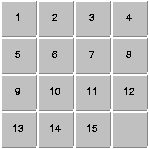There are two basic kinds of objects: procedures and ASTs. ASTs can be constants or applications. Each application is associated with one or more ASTs known as its children; it is their parent. Not every AST needs to have a parent, but those that do only have one. The association between a parent and its children is navigable only from parent to child. There is also a one-way association from each procedure to a parentless AST. Each AST is associated in this way with any number of procedures (including zero).
countExpensiveItems to the
ItemList class in the Java version of CompuDuds. This method
takes a single argument, which is the maximum price we are willing to
consider "inexpensive." The method's job is to return as its value
the count of
how many expensive Items are
in the ItemList. For example, suppose we display our ItemList and it
is as follows:
1) Charcoal chinos, size 32, hemmed to 32 inches; $33.00 2) Ecru Oxford shirt, size 16/32; $19.50 3) Khaki chinos, size 32, hemmed to 29 inches; $33.00 4) Blue Oxford shirt, size 16/32; $19.50 Total: $105.00If we now invoke
countExpensiveItems(1950) on this ItemList,
we are asking to count only those items that cost more than
1950 (i.e., $19.50), so we will get back 2 as the return value.
Puzzle applet's pushTile method. Suppose the puzzle is in its
initial configuration

with
blankRow and blankCol both equal to 3.
Suppose that
now two different threads concurrently invoke pushTile(3, 2)
on this
puzzle. That is, both threads are pushing the tile immediately to the
left of the blank. As a result of a race between the two threads,
the final result is as follows:

You are to focus on the following six steps that each thread goes through:
- Checking
blankCol > colthe first time. - Doing
buttons[blankRow][blankCol-1].getLabel(). - Doing
buttons[blankRow][blankCol].setLabelwith the result from the previous step. - Doing
blankCol--. - Checking
blankCol > colthe second time. - Doing
buttons[blankRow][blankCol].setLabel("").
pushTile(3, 2) thread 1 and
the other one thread 2, we can call thread 1's actions 1a through 1f
and thread 2's actions 2a through 2f. You are to list these 12
actions in an interleaved order that will produce the result shown above.
You are also to say what the final values of
blankRow and blankCol are.